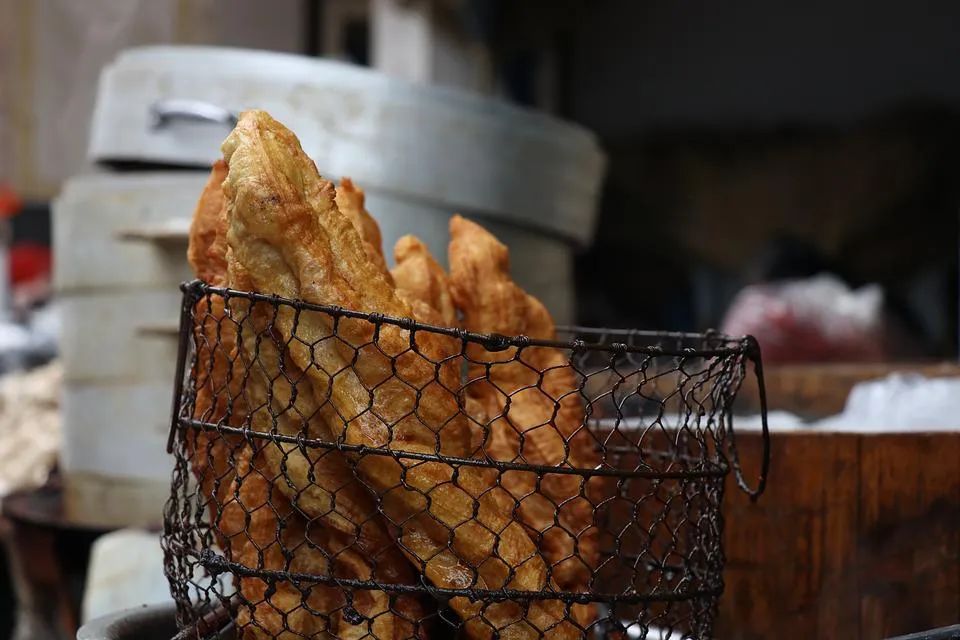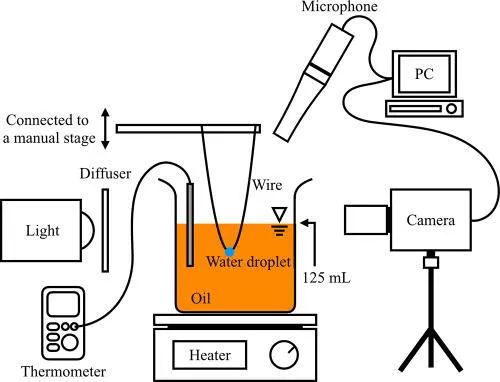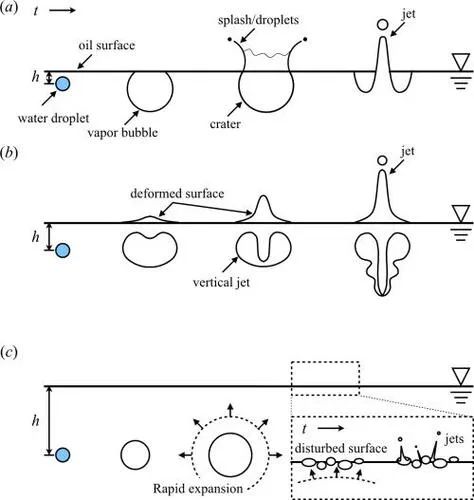The master of the fried fritter may be an expert in fluid mechanics
Author:Institute of Physics of the Ch Time:2022.06.14
Each bite is made of different sounds such as crickets, bangs, hissing, crackling, etc., and the bubbles inside can be divided into three categories, each category corresponds to one sound. Recently, several scientists who were drunk at gourmet science used high -speed cameras and microphones to record the bubbles produced when fried things, with data instead of experience, and strived to make good chefs that can understand oil cookers and avoid splashing oil.

Picture source: pixabay
Written by Cheng Yuqi
Edit Wei Xiao
At the moment of the food, the rising heat was accompanied by the crackling sound, and I wondered how many exhausted souls it soothed. Fried food is a food that spans culture and the times. French fries in fast food, tempura in Japanese materials, fritters on the roadside stalls ... The sound of food in the oil pan can not only evoke the diner's snoring. The worm also aroused the interest of physicists.
In order to explore how the sound of fried things was formed, Akihito Kiyama, Utah State University, Utah State, and UNIVERSITY of Waterloo, King Abdullah University of Science AND, ) The colleagues recorded countless "frying moments" with cameras and microphones: they analyzed the bubbles and sounds produced when water droplets entered thermal oil with fluid mechanics methods, and explained the formation of splattered hot oil. In academic journals, in academic journals "Physics of Fluids" published a paper.
After the water droplets enter the hot oil, it forms a mode of bubbles and splashing. Source: Thesis
Fry a piece of paper and a drop of water in the laboratory
For this small bubble, the research of the predecessors is mainly concentrated in one field: the liquid heated with a droplet impact, and study the subsequent dynamic process. Scientists have dripped water (even methanol) to the surface of hot peanut oil, soybean oil, and mustard oil of different thickness, and study the evaporation and splash of water droplets (it seems that every kind of oil has helped a paper publishing). Of course, carbonated drinks with bubble bubbles have not been let go -someone pour it into beer to study bubble distribution.
In this new study, in order to reduce the difficulty, the researchers planned to imitate the "two -dimensional food" to make a pre -research -like fried shrimp slices, fried a piece of paper dipped in water. Pre -research helps them divide the bubbles into three categories: the "Explosion Cavity" of the oil surface will explode, and the "elongted cavity" formed down Small splattered "oscillating cavity".
Then they directly reduced the two -dimensional to zero -dimensional: in the laboratory, fried drops of water with the oil temperature of fried food. This operation is not novel, but other studies are the surface of drip droplets freely and impact oil. And they are different: the researchers carefully designed the experimental device, referring to the "hanging method" used in the combustion experiment, sink a drop of distilled water with a volume of less than 4 μL to the bottom of the suspension line, and then use the manual platform to immerse it into the oil to use it to use it to use it in oil to use it to use it to oil it. This controls the depth of the droplets. Subsequent experiments show that the initial depth of liquid droplets is one of the important parameters, so the control of depth becomes very important.

Experimental device schematic diagram. Source: Thesis
The oil is rapeseed oil, and the temperature is controlled between 170-210 ° C. It is about the temperature of fried food, so as not to make rapeseed oil smoke. A high -speed camera is placed outside the container, which can take clear images of water droplets. Because the circular glass container will twist the image in the horizontal direction, all the distance is measured vertically. Three types of bubbles
Like the pre -experiment, the bubbles produced by "Fried Water Drops" are also divided into three categories.
After the temperature of the water droplets entering the heat oil, the heat is heat -gallized, forming an air bubble cavity in the oil. If the initial position of this bubble is very close to the liquid surface, it is enough to break through the liquid surface, which will make the oil flower splash and belong to the explosive cavity; if the initial position of the bubbles is slightly farther, the liquid surface is not broken, and the interaction forms the liquid surface and the bubble inside the bubble. The two shots of the upper and lower streams belong to the stretch cavity; if the bubbles are farther away, the spherical shape is always kept during the oscillation process.
A explosion cavity, B stretch cavity, C oscillating cavity. Picture source: thesis

The physics behind the hot oil splash
Each type of bubbles are photographed by high -speed cameras, and it records its sound characteristics in time and frequency. The explosive cavity is the same as the basal frequency of the stretch cavity, which means that the sound mainly derives the inflation process of the bubbles; the base frequency of the oscillating cavity is slightly smaller, and its sound comes from the periodic oscillation of the bubble volume.
For the explosive cavity, the bubbles quickly expanded the liquid surface, and the thermal oil formed a splash droplet (gas -dissolved gel). We can observe a cluster of water on the oil surface, and the bubbles under the oil surface keep the hemispherical shape, and start to move upwards. The depth and time of the bubbles have a power relationship. When the depth reaches the maximum value, the bubbles begin to flatten, and the spray above the oil surface will also form a dome.
Explosive cavity bubbles. Source: Thesis
The changes and morphological changes of the explosive air bubble sound signal are synchronized. At the stage of the formation of bubbles, the sound signal is weak; when the bubbles break through the liquid surface, the sound quickly reaches the peak, which shows that the explosion is the main source of sound; after that, the sound is attenuation over time, almost zero after 5 ms, and the peak frequency frequency is frequently. About 1.4 kHz.
For the stretch cavity, because the bubbles cannot break through the liquid surface, when the bubbles approach the liquid surface, the interaction allows the oil to form the oil column upward, and the top of the bubbles forms an inner concave cavity downward. The peak signal of this type of bubbles is captured at 1 ms, and the peak frequency is also about 1.4 kHz, which is the same as the peak frequency of the explosive cavity. However, the main source of stretching the cavity is the rapid expansion of air bubbles in 1 ms, not the stretch of bubbles later. After 5 MS, the sound signal still has a small fluctuation, which may be because of the continuous existence of bubbles.
Pull the cavity bubble. Source: Thesis
Interestingly, after the researchers entered the hot oil 13 ms, the researchers observed the emergence of "sub -drip". The same phenomenon can also be observed in the experiments of other scientists with liquid droplets. In this example, a droplet was left with a lengthened cavity. The droplet drip was sinking, and then evaporated in a deeper position and formed an oscillating cavity. This may be able to explain a practical scene: when frying things, different types of bubbles are produced in the oil pan, resulting in hot oil splash.
Pull the cavity+oscillation cavity bubbles, produce oil droplets splashing. Source: Thesis
The oscillating cavity is produced at the depth of 11 mm under the water droplets. In the first 3 MS, the drip vaporization forms the bubbles and expands quickly. After that, the volume of 10 ms bubbles has been constantly oscillation, so that some small bubbles on the liquid surface to form a shot. The small bubbles on these liquid surfaces may be brought in when the suspension line is immersed, or it may be the residue of the last experiment. At 13 MS, the bubbles reached a maximum volume and decomposed into many small bubbles, which weakened the overall oscillation.
The sound signal of the oscillating cavity bubble can also be divided into these three stages. The second stage of the cycle oscillating is the main source of sound. The peak sound frequency is about 0.8 kHz, which is consistent with the oscillation frequency of the bubble. The second harmonic frequency 1.6 kHz formed a secondary peak. Researchers believe that when there are some small bubbles on the oil surface, even if there is no rupture of the oscillating cavity bubble, it may cause hot oil to splash. The interaction of bubbles and oil noodles is a very complicated phenomenon that needs to be studied in depth.
oscillation cavity bubble. Source: Thesis
In short, this study proves that different bubble classifications have different acoustic characteristics (amplitude, base frequency, and duration), which means that the bubbles in these oil pan can be distinguished in sound. Maybe soon after, we can see scientists developing acoustic sensors. By detecting the high -frequency noise sent by the oil cooker to help determine whether there is a splash of small oil droplets. Researchers also hope that classification of the three states may help understand the larger droplets produced during the fried things, so that novice kitchen novice will no longer be afraid of splashing oil foam, making cooking safer, and preventing fire accidents from accidents. occur.
Thesis information
Title MORPHOLOGY of Bile Dynamics and Sound in Heated Oil
Author Akihito Kiyama, RAFSAN RABBI, zhao Pan, SOM Dutta, John S Allen, TADD TRUSCOTT
Date 07 june 2022
Journal Physics of Fluids
Doihttps://doi.org/10.1063/5.0088065
摘要The interaction between a heated oil bath and water droplets commonly occurs in the kitchen and has important implications for cooking, fire safety, and indoor air pollution. The interplay between the bubble dynamics in a heated oil bath, the generated sound, and the ligament -like expulsion to the surrounding air is examined. We focus on an explosion of a millimeter-sized water droplet in heated oil as a simplified case. We discuss three typical bubble types that can be classified as a function of the stand-off parameter h /R, where h is the distance between the oil surface and bubble and R is the maximum bubble radius. Our data describe the morphology of bubble dynamics inside a heated oil bath and represent those found in the cooking pan. This paper also highlights potential applications of our findings.
This article comes from the WeChat public account "Scientific Research Circle". If you need to reprint, please contact Keyanquan@huanqiukexue.com
Reprinted content only represents the author's point of view
Does not represent the position of the Institute of Physics of the Chinese Academy of Sciences
If you need to reprint, please contact the original public account
Source: Scientific Research Circle
Edit: Lezi Superman

- END -
Jingdong 618: Sichuan consumers have a high purchasing power, and its strength ranks 6th in the country
In 2022, Jingdong 618 brought a strong human fireworks to ignite the domestic consumer market. According to Jingdong Consumption data, during the 618 of 2022, in the nation's 31 provinces / municipa...
Ministry of Industry and Information Technology: Build a national integrated anti -fraud technical p

It is learned from the Ministry of Industry and Information Technology that in ord...